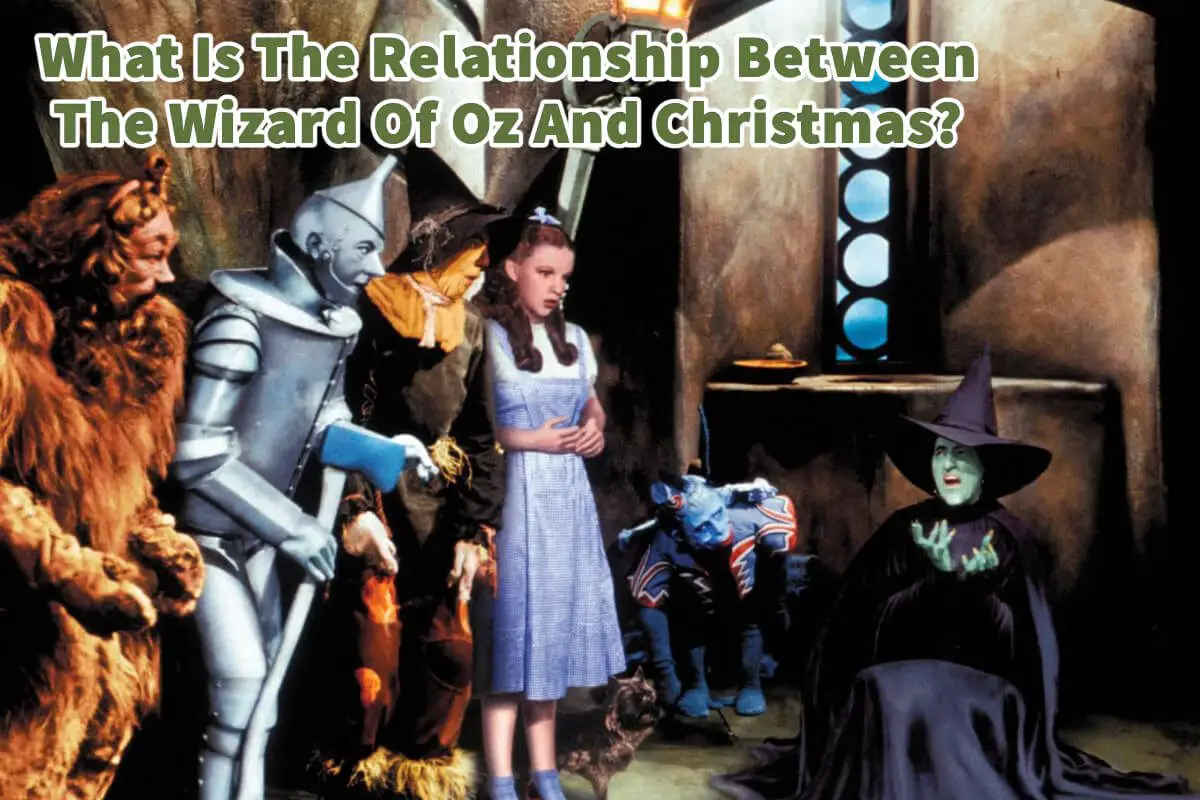The Wizard of Oz seems to be one movie that is usually played on television around Christmas time. The Wizard of Oz continues to be a popular American classic.
The Wizard of Oz is a classic American story that has often been played on television during Christmas. Even though it is a movie frequently shown during Christmas, The Wizard of Oz does not symbolize Christmas. The Wizard of Oz symbolizes the political state of America when the author L. Frank Baum lived.
Table of Contents
- The Relationship Between The Wizard Of Oz And Christmas
- About The Wizard of Oz By L. Frank Baum
- Basic Symbols Of The Wizard of Oz Story
- 10 Reasons “The Wizard of Oz” Remains an Enchanting Classic
- Frequently Asked Questions
- Related Questions
The Relationship Between The Wizard Of Oz And Christmas
The popular American story The Wizard of Oz is not related to Christmas. Even though there could be some similar symbols between The Wizard of Oz and Christmas symbols, they are not explicitly associated.
The Wizard of Oz is not a Christmas story as we would think of a Christmas story such as the Christmas story by Charles Dickens, How the Grinch Stole Christmas, or the popular movie, It’s a Wonderful Life.
But The Wizard of Oz continues to be a movie that is shown often during the Christmas season. Here are some of the reasons why:
- The Wizard of Oz is a heartwarming story that looks at the strength between families and friends.
- Teaches Us Home Is Where The Heart Is – As Christmas is when family and friends gather together, The Wizard of Oz reminds us of the importance of knowing that home is where the heart is.
- Talks Of Getting Back Home – As many people may be away from their homes before the Christmas season, The Wizard of Oz is a story about the importance of being able to find your way back home.
- Upbeat Fun Movie And Story – The Wizard of Oz is a fun, positive movie. During the Christmas season, we enjoy the fun film.
- Great Classic Music – The classical version of The Wizard of Oz has some great classical music. Music that most of us grew up singing or knowing. Around Christmas time, we all love classical music and singing.
Even though The Wizard of Oz is not a specific Christmas story, it still is an essential story for the American culture. The story reminds us that home is where the heart is.
About The Wizard of Oz By L. Frank Baum
In 1900 the iconic story The Wonderful Wizard of Oz was published by L. Frank Baum. He wrote the book as a fantasy children’s book.
In 1939 the book, after Baum’s death, was made into a movie. Most people know the story of The Wizard of Oz from the movie adaptation.
Baum’s book” The Wonderful Wizard of Oz” was a book that was filled with a lot of Christian and other symbols; this could be some reason why many people continue to associate “The Wonderful Wizard of Oz” with the Christian holiday of Christmas.
Baum and his wife were active members of the Theosophical Society, which encouraged open-minded inquiry into world religions, philosophy, science, and arts. Baum was also politically active in local politics.
Basic Symbols Of The Wizard of Oz Story
The Wizard of Oz is filled with many symbols and meanings. Here are some of the more popular symbols:
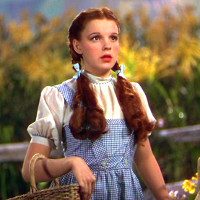
- Dorothy Gale – The lead character, Dorothy Gale, symbolizes the average American and serves as an allegory of America. Dorothy is the best of us as Americans as we are independent yet look at how we can solve the world’s problems. Even though Dorothy was young, she was an optimistic leader. We can see symbolism for America as a young country and an optimistic nation that believes in a better future for themselves and others.
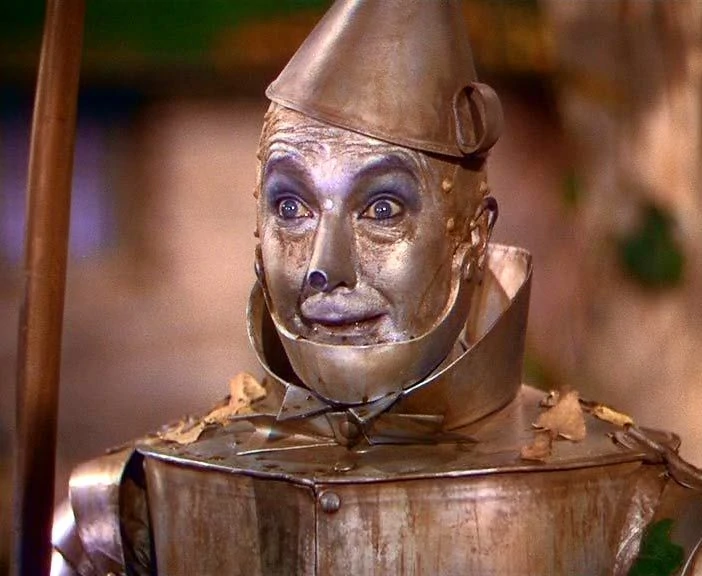
- The Tin Man – The Tin Man represents the distress of factory workers in the United States. He is one of Dorothy’s companions as they quest to slay the wicked witch of the West. In The Wizard of Oz, the Tin Man represents the political tones of the humanization of American factory workers because of the Industrial Revolution.

- The Scarecrow – A scarecrow stands for the American midwestern farmers and all of the different troubles facing them in 19th century America. The scarecrow has a terrible sense of inferiority and self-doubt. This alludes to how many in Kansas and other Midwestern farmers felt in the 1890s.
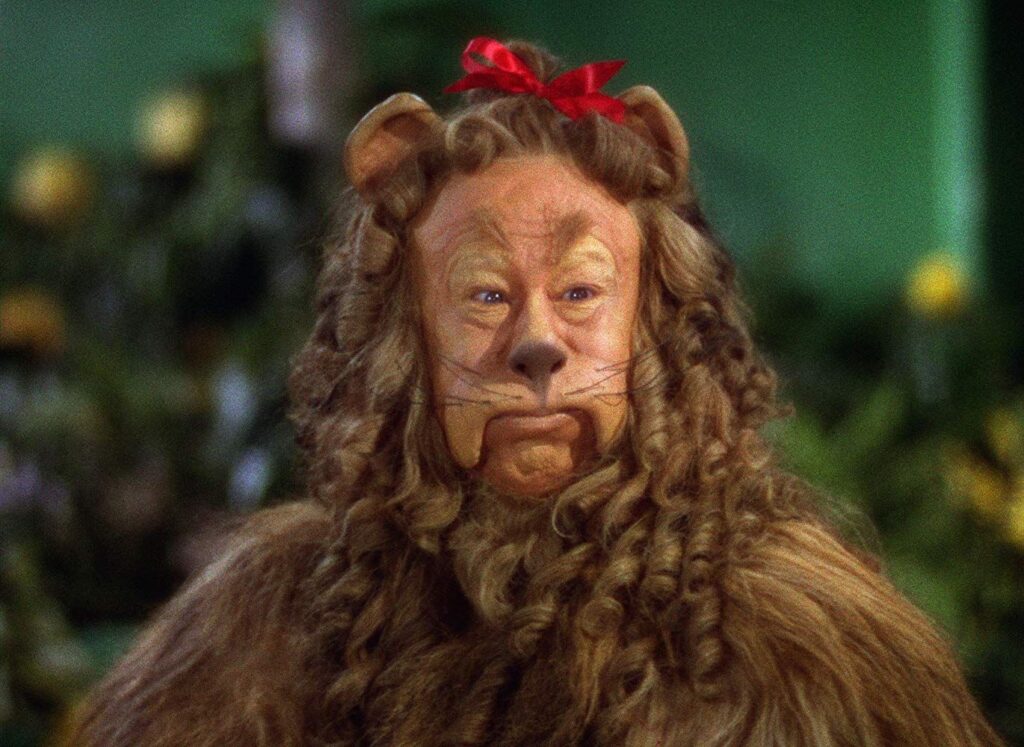
- The Cowardly Lion – Cowardly Lion represents the Democratic presidential candidate and populous politician William Jennings Bryan. Byran never won the White House; in the US press, Byran was depicted as a lion. So, the cowardly lion represents cowardly political power.

- The Wicked Witch – The Wicked Witch serves as a metaphor for the powerful interest of American politics. The Wicked Witch of the West and East serves as a metaphor for power and the influences of money and interest in American political life. The Wicked Witch of the East represents the industrial interests of the East Coast of the United States, and The Wicked Witch of the West represents the interests of the West Coast, including the greedy railway owners and wealthy oilmen.

- The Emerald City – The amount city represents America’s capital Washington DC. The emerald city is situated at the end of the yellow brick Road. Emerald City symbolizes a direction Baum saw America going towards money and greed while forgetting American political values.

Listen To Our Podcast About What Is The Relationship Between The Wizard Of Oz And Christmas? below or by clicking here.
- The Wonderful Wizard – The Wonderful Wizard symbolizes the fraudulent illusion of the American presidency; basically, the Wizard shows that the American president is tied together with money and other special interests.
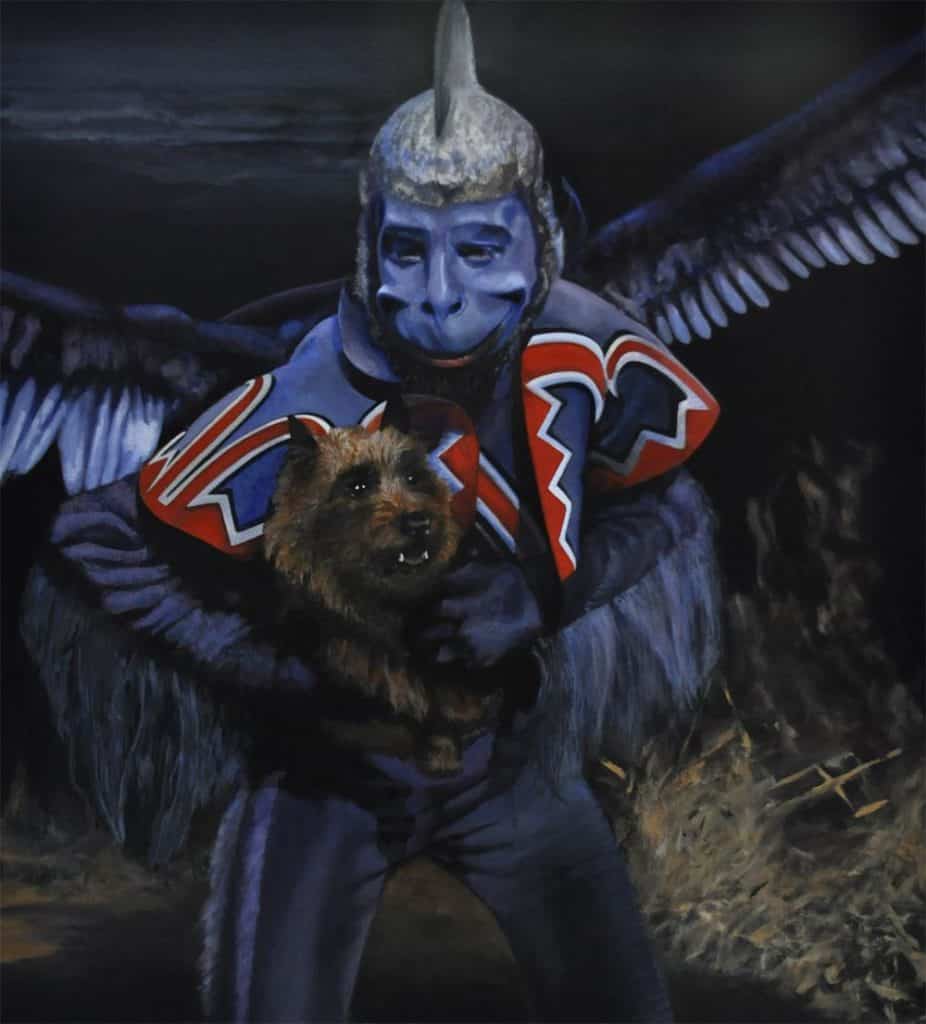
- The Winged Monkeys – The wing monkeys represent the enslavement of Native Americans and Asian laborers. It’s about all types of marginalized and enslaved people in American society.

- The Cyclones Or Tornados – The cyclone or tornados symbolize the political upheaval caused by many political movements in the United States. It shows how distracting these types of political activities are.
- Women’s Independence – When Baum wrote his book, women in the United States did not have the right to vote. Women did not receive the right to vote until the 1920s. So it was interesting that his antagonist in this novel was a strong, independent young woman. That is why The Wizard of Oz also celebrates the independence of women.
The Wizard of Oz is about political symbols and, more specifically, characteristics of America during the period Baum wrote the book The Wonderful Wizard of Oz. Some have said it’s a novel about atheism, not Christianity; there is no objective evidence.
The Wizard of Oz does not have any symbols similar to the Christian symbols of Christmas. It is much more of a political book full of clinical symbolism than any Christmas symbol.
10 Reasons “The Wizard of Oz” Remains an Enchanting Classic
“The Wizard of Oz,” originally a 1900 novel by L. Frank Baum and later transformed into the iconic 1939 film, has mesmerized generations with its vibrant characters and timeless themes. Nearly a century since its cinematic release, it still captures the imagination of both young and old. Here are ten compelling reasons for its undying popularity:
- Vibrant Color Transition: The transition from sepia-toned Kansas to the technicolor Land of Oz is nothing short of magical. This visual spectacle was groundbreaking at the time and remains a cinematic hallmark.
- Universal Themes: At its heart, the story delves into the quest for self-discovery and the realization that the attributes we seek (courage, heart, brain) often already reside within us.
- Memorable Characters: Dorothy, the Scarecrow, the Tin Man, the Cowardly Lion, the Wicked Witch of the West – these characters have become cultural icons, each representing unique facets of human nature.
- Catchy Musical Numbers: Songs like “Over the Rainbow,” “We’re Off to See the Wizard,” and “Ding-Dong! The Witch Is Dead” are timeless tunes that continue to enchant.
- Diverse Interpretations: Whether viewed as a coming-of-age tale, political allegory, or a simple fantasy, the narrative’s layers allow for multiple readings, making it appealing to various audiences.
- Magical Elements: From the flying monkeys to the ruby slippers and the Emerald City, the story is filled with fantastical elements that ignite the imagination.
- The Heroine’s Journey: Dorothy’s journey, filled with trials, friendships, and discoveries, mirrors the classic hero’s journey, making it a universal tale of adventure and growth.
- Enduring Lessons: Messages about the importance of home, friendship, and believing in oneself are evergreen and resonate with every generation.
- Cultural Impact: From theatre adaptations like “Wicked” to pop culture references in music, literature, and fashion, “The Wizard of Oz” has left an indelible mark on various forms of media.
- Nostalgia and Tradition: Many people have grown up watching “The Wizard of Oz” as a family tradition. The shared memories associated with the film make it a cherished classic passed down through generations.
“The Wizard of Oz” thrives as a beacon of cinematic and literary achievement, with its whimsical world, timeless lessons, and unforgettable characters. It’s a testament to the story’s magic that, no matter how often we journey down the Yellow Brick Road, there’s always something new to discover.
At A Bus On A Dusty Road, we talk about travel, life, and ex-pat living. We are all about “Living Life As A Global Citizen.” We explore social, cultural, and economic issues and travel.
We would love to have you be part of our community. Sign up for our newsletter to keep up-to-date by clicking here. If you have any questions, you can contact me, Anita, by clicking here.
Listen to our Podcast called Dusty Roads. You can find it on all major podcast platforms. Try out listening to one of our podcasts by clicking here.
Subscribe to our A Bus On A Dusty Road YouTube Channel with great videos and information by clicking here.
Frequently Asked Questions
1. Is “The Wizard of Oz” a Christmas movie?
No, “The Wizard of Oz” is not a Christmas movie. While it’s often shown on television during the Christmas season, it doesn’t have a direct connection to Christmas themes.
2. Why is “The Wizard of Oz” frequently broadcast during Christmas?
The tradition of airing “The Wizard of Oz” during Christmas started in the 1950s when CBS began broadcasting it as a holiday special. It became a popular tradition, and other networks followed suit.
3. Does “The Wizard of Oz” have any Christmas elements in its storyline?
No, the storyline of “The Wizard of Oz” does not include Christmas elements. It is a fantasy adventure that follows Dorothy’s journey through the magical land of Oz.
4. What is the relationship between “The Wizard of Oz” and Christmas?
The connection is largely a broadcasting tradition. Networks air the movie during the Christmas season, perhaps because of its family-friendly appeal and the desire to attract viewers during the holidays.
5. Are there any Christmas messages or symbols in “The Wizard of Oz”?
No, the movie does not contain Christmas messages or symbols. Its themes revolve around courage, friendship, and self-discovery, rather than Christmas-specific elements.
6. Does the author, L. Frank Baum, have any ties to Christmas in relation to “The Wizard of Oz”?
There is no known connection between L. Frank Baum and Christmas in the context of “The Wizard of Oz.” The story is more closely tied to Baum’s political and social commentary on America.
7. Is there a deeper meaning to why “The Wizard of Oz” is associated with Christmas?
The association may be more about the movie’s timeless and family-friendly nature, making it suitable for holiday programming. It could also be attributed to the nostalgia and tradition that has developed over the years.
8. Are there any Christmas-themed adaptations of “The Wizard of Oz”?
While there may be Christmas-themed parodies or adaptations, the original “Wizard of Oz” story does not have a Christmas version.
9. Does the movie industry intentionally link “The Wizard of Oz” with Christmas for marketing purposes?
The decision to broadcast “The Wizard of Oz” during Christmas is likely a strategic one by networks to capitalize on the holiday audience. It has become a nostalgic and anticipated part of the holiday season.
10. How can we appreciate “The Wizard of Oz” beyond its Christmas association?
To fully appreciate “The Wizard of Oz,” it’s important to understand its historical context and themes related to American society. Explore its symbolism and messages about courage, home, and self-discovery that go beyond the Christmas tradition.
Related Questions
4 Tips For Preparing Your Own Family History Trip and Travel
Before you decide to travel to your Ancestor’s hometown, there are some things you should do to make sure your family history tour is successful. First, you must research as much genealogy as possible before you actually travel. You should then do some local research on the areas you are traveling to; and map out what places you should visit. Also, take some time to study the maps of where you are traveling.
To learn more, you can read our blog on 4 Tips To Preparing Your Own Family History Trip and Travel by clicking here.
What Are Some Lessons We Can Learn From Mongolian Nomadic Herders?
The Mongolian nomadic herders in the Gobi Desert taught me six important lessons about our community support importance. I learned some important lessons about our working together as a group and supporting our neighbors while also building a support team that will always be there for us – especially in time of need. For this to happen, we must each be willing to serve in our communities and work together.
You can discover more by reading our blog 6 Lessons On Community Support from The Mongolian Nomadic Herders by clicking here.
Why You Need a Rabies Shot Before Traveling to Southeast Asia?
Travelers to Asia and especially Southeast Asia, should be sure to get or ensure their rabies shots are up-to-date before they travel anywhere in southeast Asia. The reason is that rabies is still a common problem in many of these areas, and if you are traveling out in the countryside, getting a shot may be difficult or almost impossible to obtain.
You can learn more by reading our blog Why you need a Rabies Shot Before Traveling to Southeast Asia by clicking now.

